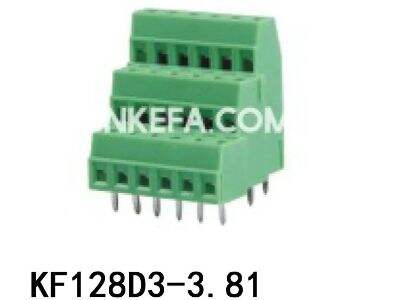Electio Caementi Terminalis pro Tuo Opere Electrico
Sunt plures factores considerandi dum caementum terminalem eligit pro tuo opere electrico. Primus est quod genus Caementi Terminalis opus sit tibi pro tuo projectu. Sunt diversa genera caementorum terminalium, ut genere visco, genere helicis, displacemente isolationis et caemento limitis terminalis. Unumquodque genus suis propriis formis applicationibusque venit, et debes eligere idoneum ad tuae rei aptandum.
Currentes et voltatio etiam magnae causae sunt in clavibus terminalibus. Sequens est quod scire debes quando clavem terminalem eligis, quae onus electricum proiecti tui sustinere possit, neque overheata fiant et demum circuitus breves causentur. Praeterea, considerare oportet magnitudinem fili et compatibilitatem materialem, ut connexio secura et fiducia habeatur. Harum parametrorum inspectio tibi permittet clavem terminalem eligere, quae necessitates electricas proiecti tui satisfaciat.
Genera clavium terminalium et loca ubi utimur eis
Sunt varii modelli clavium terminalium, qui ad casus usus speciales aptantur. Claves terminales a vitiis saepe in applicationibus commercialibus et industrialibus utuntur propter connexionem solidam et installationem commodam. Typus molle D Blocculus terminalem din rail , contra, praebent commodam et valde rapidam connexionem sine usus instrumentorum. Terminalia displacementis insulationis idonea sunt ad applicationes densitatis altae in connectionibus electricis, et terminalia barrieri maiorem protectionem praebent adversus circuitus breves.
Sicut semper, determinatio quae forma terminalium blockorum optima sit pro tuis necessitatibus pendebit ab eo genere operis quod agis. Exempli gratia, si saepius connectere et disjungere oportebit fila (quae constringenda sunt vitis) tum fortasse magis quaeris terminale genus helicoidis. Si aliquid tutius et/vel magis perpetuum opus est, tunc melius erit terminale genus viti. Scire diversas formas terminalium blockorum et ubi communiter utantur, bonus est gradus ad eligendum optimum pro tua functione electrica.
Elige terminale blockorum rectum
Dum seligis clavem terminalem pro tuo opere electrico, necesse est indagationem facere in necessitatibus operis tui. Considera gradum crosstalk, calibres filorum, specificationes voltages/currentis, circumstantias ambientales et conditiones installationis. His exigitonibus fundatis, aptam configurationem clavis terminalis applicationi tuae eligere potes.
Etiam facilitatem installationis, conservationis et futurae dilationis considerare debes, dum clavem terminalem eligis. Selige Blocculus terminalem SMT cum variis optionibus montandi, notatione clara et connectione filorum, et aliis multis optionibus idoneis applicationi tuae. Usus sequentibus monitis, certus esse potes quod clavis terminalis quam elegisti necessitates operum tuorum implebit et fidam connexionem electricam praebet.
Comparatio Clavium Terminalium contra Virgas Bus
Cum terminalem castrum eligis, praeter meras characteristicas technicas spectare debes et ad qualitatem producti atque diuturnitatem attendere. Electio terminalis castrī prīmae classis quod ex materiīs dūrābus factum est, perennem operam et qualitatem in systemate electricō tuō praebēbit. Terminales castra elige quae secundum normās industriālēs sunt et certificātiōnibus carent, ut certus eās dē fōrmā optimā et fidēlī esse vērificēris.
Praeterea, viabilitās usūs castrī terminalis tempore longō importāns est, ut constet eum adversīs condiciōnibus ūniversī, vibrātiōne, et mūtātiōnibus temperatiōnis resistere posse. Terminales castra elige quae ad dūrabilitātem et operam diūrnam facta sunt, ut impensae cum mānitentiā et substītūtiōne coniunctae contrahantur tempore. Comparātiō qualitātis et diuturnitātis efficit ut prōductum emās quod tuīs rēbus postulātīs ad operam et ūsum perpetuum satisfaciat.
Castra Terminalia Recte Installantur et Servantur
Recta installatio et conservatio bulloni terminalis essentialis est ad functionem generalem systematis et integritatem apparatus distributionis electricitatis. Certificare debes utique wires recte sint installatae et ut blocus recte sit montatus secundum praescriptiones fabricantis pro tuo speciali bullone terminali. Utere instrumentis et apparatibus idoneis, ne resolutae, in circuitu brevi factae vel cum periculis safety fiant!
Bulloni terminales regularly conservari debent, ne corrosioni, obcalescentiae et attritioni mechanicis pateant, quae eorum functionem laedere possunt. Recommandatur conditionem, munditiam et firmitatem connectionum in bullonibus terminalibus regularly inspicere. Munda bullones terminales et areas circumiacentes, ut sordes, pulverem vel spurcicia removeas quae connectionibus electricis officium impedire possunt.
et terminalis copula idonea eligenda adiuvabit ad successum tuae rei electricae. Quae factores servabis (typus terminalis copulae, necessitudines operis, qualitas vel durabilitas) dum copulam terminalem eligis, determinabit utrum compositum exspectata performet et utrum connectio electrica fida sit. Hic apud KEFA, tibi praebemus collectionem excelsam blocculus terminalem insertabilis quae diversis usibus sunt descriptae ad necessitudines operis tui complendas. Continge nos hodie pro informationibus amplioribus de solutionibus nostris terminalibus copulis et inveni rectam pro tuo opere electronico.

